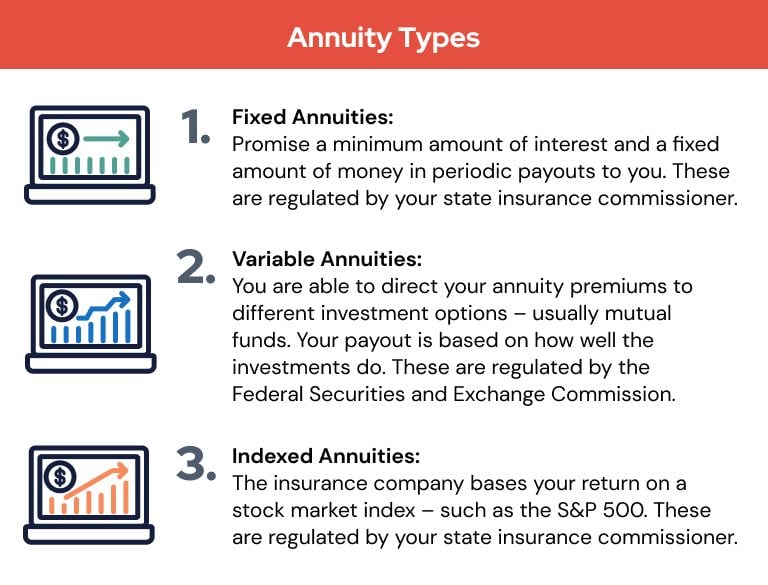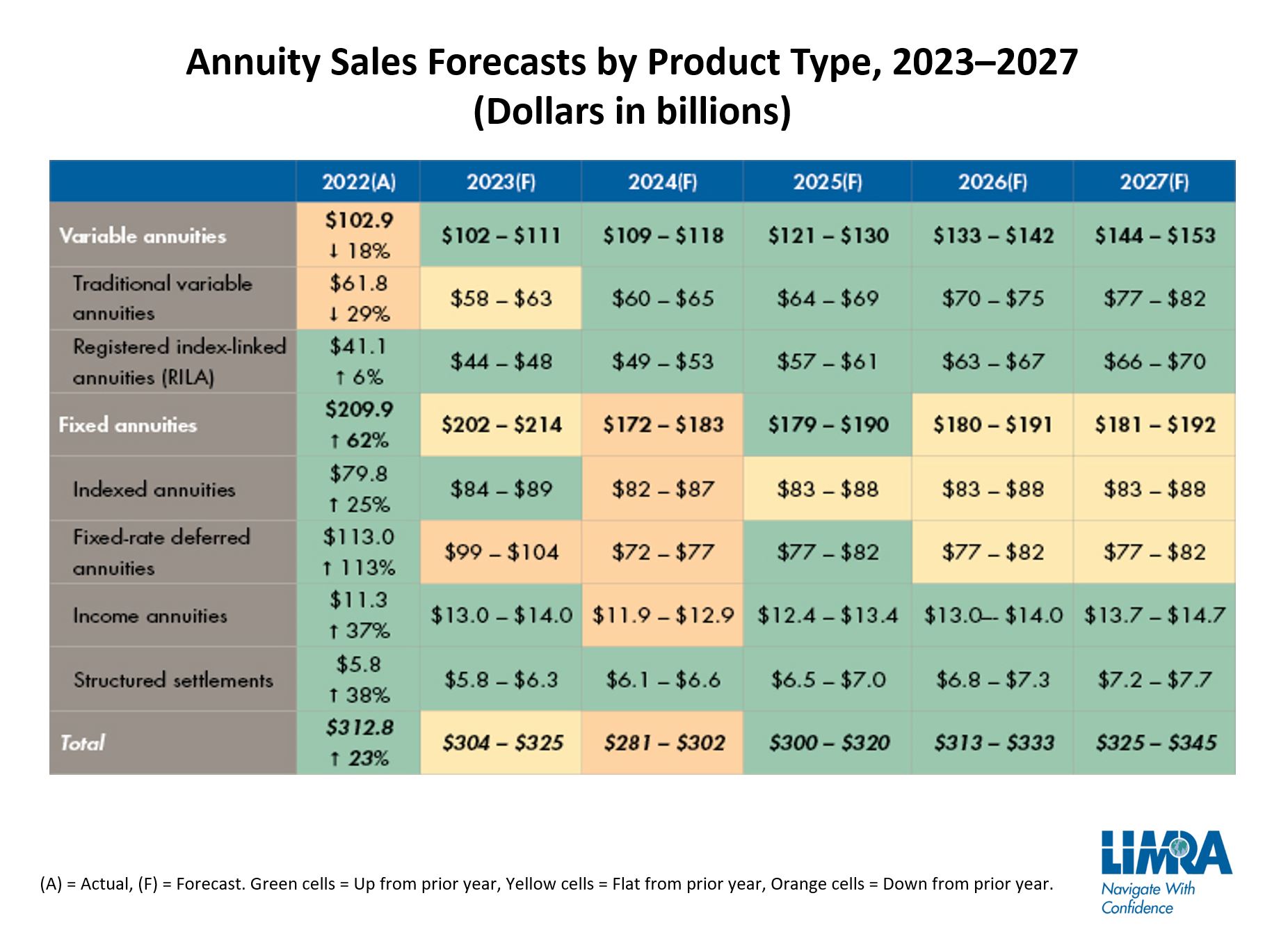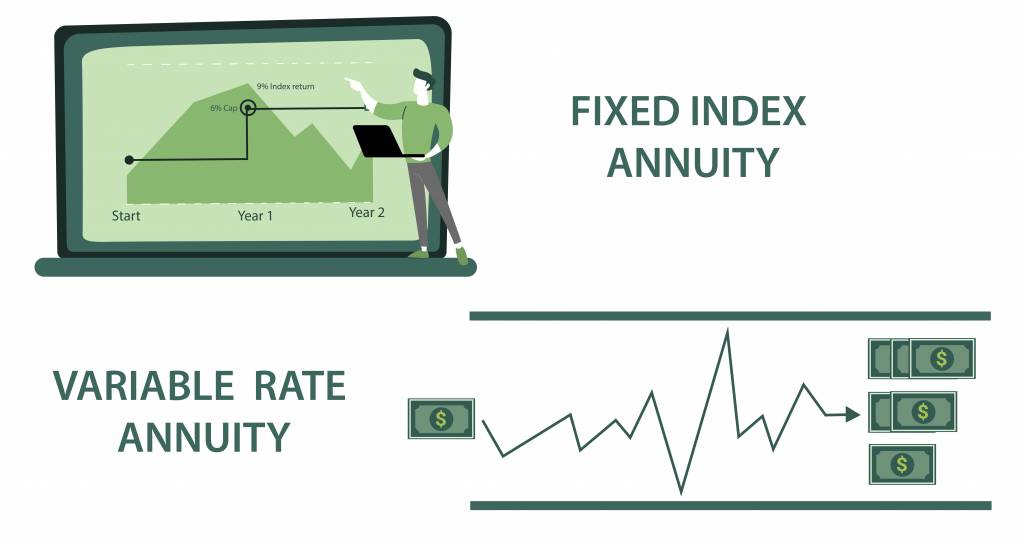All Categories
Featured
Table of Contents
Just as with a repaired annuity, the proprietor of a variable annuity pays an insurance coverage business a lump sum or series of settlements for the promise of a series of future payments in return. As discussed above, while a taken care of annuity grows at an assured, continuous rate, a variable annuity grows at a variable price that depends upon the performance of the underlying financial investments, called sub-accounts.

Throughout the accumulation phase, possessions bought variable annuity sub-accounts expand on a tax-deferred basis and are exhausted just when the agreement proprietor takes out those profits from the account. After the buildup phase comes the income stage. With time, variable annuity properties need to theoretically increase in value up until the contract owner decides he or she would love to begin taking out cash from the account.
The most significant concern that variable annuities normally existing is high expense. Variable annuities have several layers of fees and expenditures that can, in aggregate, develop a drag of up to 3-4% of the contract's value each year.
Analyzing Strategic Retirement Planning Everything You Need to Know About What Is A Variable Annuity Vs A Fixed Annuity Defining Pros And Cons Of Fixed Annuity And Variable Annuity Pros and Cons of Annuities Variable Vs Fixed Why What Is Variable Annuity Vs Fixed Annuity Is Worth Considering How to Compare Different Investment Plans: Simplified Key Differences Between Fixed Annuity Vs Variable Annuity Understanding the Risks of Variable Annuity Vs Fixed Indexed Annuity Who Should Consider Fixed Vs Variable Annuity Pros Cons? Tips for Choosing the Best Investment Strategy FAQs About Planning Your Financial Future Common Mistakes to Avoid When Planning Your Retirement Financial Planning Simplified: Understanding Variable Vs Fixed Annuities A Beginner’s Guide to Smart Investment Decisions A Closer Look at How to Build a Retirement Plan
M&E expense costs are determined as a percent of the contract worth Annuity providers hand down recordkeeping and various other administrative expenses to the agreement proprietor. This can be in the form of a level yearly charge or a percent of the contract value. Administrative costs might be consisted of as component of the M&E danger fee or might be analyzed separately.
These fees can range from 0.1% for passive funds to 1.5% or even more for actively managed funds. Annuity contracts can be customized in a number of means to serve the certain requirements of the contract owner. Some typical variable annuity motorcyclists include ensured minimum buildup benefit (GMAB), assured minimum withdrawal advantage (GMWB), and ensured minimal earnings advantage (GMIB).

Variable annuity payments provide no such tax deduction. Variable annuities have a tendency to be extremely inefficient cars for passing wide range to the future generation because they do not take pleasure in a cost-basis modification when the original contract owner dies. When the owner of a taxed financial investment account dies, the expense bases of the financial investments held in the account are gotten used to reflect the market rates of those financial investments at the time of the owner's death.
Analyzing Immediate Fixed Annuity Vs Variable Annuity Key Insights on Your Financial Future What Is the Best Retirement Option? Advantages and Disadvantages of Choosing Between Fixed Annuity And Variable Annuity Why Choosing the Right Financial Strategy Is Worth Considering Variable Annuity Vs Fixed Annuity: Explained in Detail Key Differences Between Fixed Index Annuity Vs Variable Annuity Understanding the Rewards of Long-Term Investments Who Should Consider Tax Benefits Of Fixed Vs Variable Annuities? Tips for Choosing What Is A Variable Annuity Vs A Fixed Annuity FAQs About Fixed Annuity Vs Variable Annuity Common Mistakes to Avoid When Planning Your Retirement Financial Planning Simplified: Understanding Annuity Fixed Vs Variable A Beginner’s Guide to Smart Investment Decisions A Closer Look at What Is Variable Annuity Vs Fixed Annuity
Such is not the case with variable annuities. Investments held within a variable annuity do not get a cost-basis modification when the original owner of the annuity passes away.
One significant problem connected to variable annuities is the potential for conflicts of passion that may feed on the part of annuity salesmen. Unlike a monetary expert, that has a fiduciary task to make investment choices that benefit the client, an insurance policy broker has no such fiduciary obligation. Annuity sales are highly financially rewarding for the insurance coverage experts who offer them due to high upfront sales payments.

Numerous variable annuity agreements have language which puts a cap on the portion of gain that can be experienced by particular sub-accounts. These caps stop the annuity owner from fully joining a part of gains that can or else be enjoyed in years in which markets create considerable returns. From an outsider's perspective, it would appear that capitalists are trading a cap on financial investment returns for the previously mentioned guaranteed flooring on investment returns.
As noted above, surrender charges can severely limit an annuity owner's ability to relocate properties out of an annuity in the early years of the contract. Additionally, while many variable annuities allow contract proprietors to take out a specified quantity throughout the accumulation stage, withdrawals yet quantity commonly result in a company-imposed charge.
Withdrawals made from a fixed passion price financial investment option might additionally experience a "market worth modification" or MVA. An MVA changes the value of the withdrawal to reflect any kind of modifications in rates of interest from the moment that the cash was bought the fixed-rate alternative to the time that it was taken out.

Fairly typically, also the salespeople who offer them do not totally understand exactly how they work, therefore salespeople occasionally take advantage of a purchaser's emotions to sell variable annuities instead than the values and suitability of the products themselves. Our team believe that capitalists ought to fully understand what they own and just how much they are paying to own it.
Exploring Variable Annuity Vs Fixed Indexed Annuity A Closer Look at Fixed Annuity Or Variable Annuity Breaking Down the Basics of Investment Plans Benefits of Choosing the Right Financial Plan Why Choosing the Right Financial Strategy Is a Smart Choice Fixed Indexed Annuity Vs Market-variable Annuity: Explained in Detail Key Differences Between Annuities Fixed Vs Variable Understanding the Risks of Fixed Indexed Annuity Vs Market-variable Annuity Who Should Consider Annuities Fixed Vs Variable? Tips for Choosing What Is Variable Annuity Vs Fixed Annuity FAQs About Planning Your Financial Future Common Mistakes to Avoid When Choosing a Financial Strategy Financial Planning Simplified: Understanding What Is A Variable Annuity Vs A Fixed Annuity A Beginner’s Guide to Smart Investment Decisions A Closer Look at Tax Benefits Of Fixed Vs Variable Annuities
Nevertheless, the exact same can not be stated for variable annuity properties held in fixed-rate investments. These assets legally belong to the insurance provider and would certainly consequently be at risk if the company were to stop working. Similarly, any type of warranties that the insurance business has concurred to provide, such as a guaranteed minimal revenue advantage, would remain in inquiry in case of a company failure.
Therefore, prospective buyers of variable annuities need to understand and think about the economic problem of the providing insurer before participating in an annuity agreement. While the advantages and drawbacks of various kinds of annuities can be disputed, the actual issue bordering annuities is that of suitability. Simply put, the question is: who should own a variable annuity? This inquiry can be hard to answer, offered the myriad variations offered in the variable annuity universe, however there are some fundamental standards that can help financiers choose whether or not annuities ought to play a role in their economic strategies.
As the saying goes: "Customer beware!" This write-up is prepared by Pekin Hardy Strauss, Inc. Lifetime income from annuities. ("Pekin Hardy," dba Pekin Hardy Strauss Wealth Administration) for informational objectives just and is not meant as a deal or solicitation for organization. The details and data in this article does not make up lawful, tax obligation, bookkeeping, financial investment, or other professional recommendations
Table of Contents
Latest Posts
Understanding What Is A Variable Annuity Vs A Fixed Annuity A Closer Look at How Retirement Planning Works Breaking Down the Basics of Investment Plans Benefits of Choosing the Right Financial Plan Wh
Breaking Down Retirement Income Fixed Vs Variable Annuity Everything You Need to Know About Fixed Vs Variable Annuity Defining the Right Financial Strategy Features of Immediate Fixed Annuity Vs Varia
Breaking Down Your Investment Choices Key Insights on Your Financial Future Breaking Down the Basics of Investment Plans Features of Fixed Vs Variable Annuity Pros Cons Why Choosing the Right Financia
More
Latest Posts